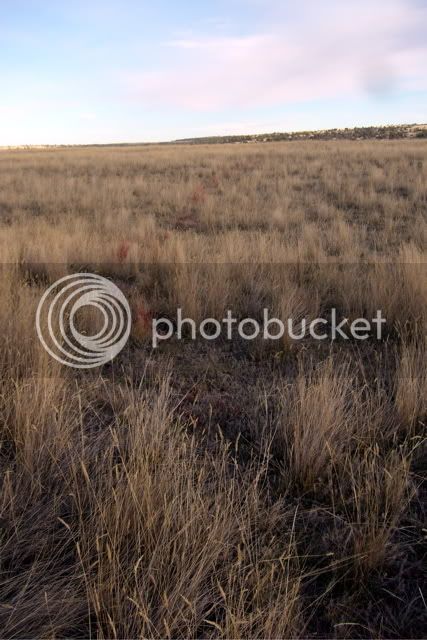ebiggs said:
It's not any different than the folks that can't figure out how the pyramids were built so they claim it must have been done by aliens.
The only thing it proves is we don't know for sure.
Unlike trying to build a pyramid like the Ancients may or may not have, I CAN shoot deer with different ball sizes and bullet designs and view the results.
Not only that I ALREADY HAVE.
I have shot a probably 3 year old Mule Deer with a 38-40 WCF blackpowder load form a first model Colt LMR with 24" barrel. I was using 37 gr FFF in a "semi-balloon head" case, Lyman 40143 (copy of factory bullet). Deer was shot through the lungs. Tiny wound channels, deer ran 40-50 yards and collapsed.
Shot a deer with a 54 loaded with 120 gr of FFF. Made BIG wound channels through lungs. Deer ran 40-50 yards and fell. Shot a WT doe at 25-30 yards 54 RB 100 gr of FFF Swiss. Just under the front of the shoulder blades, pass through, impact velocity probably 1700. Deer ran 200 yards with no reaction at all other than running away. Fell dead at full speed sliding about 25 feet on the snow.
Mule deer buck, very similar to the one shot at close range with the 38-40, shot at 140 long steps with 50 caliber RB, deer made 40 yards and fell dead. Son shot a Mule deer near identical to the the last one mentioned, 45 gr of FFF 45 cal RB. Shot passed through the lungs just over the heart. Deer ran maybe 80 yards (died in seconds at any rate).
Shot a doe that was somewhat agitated at about 50 yards with a 50, 90 gr fff, perfect lung shot. Deer ran 200+ stood and bled out a pool of blood from her nose and then fell forward into it.
Doe Mule Deer broad side, shot with 400 gr soft PP bullet with 35 caliber flat point, 92 gr of FF in a 44-90, perfect lung shot, deer ran about 120 yards. This load was very destructive in heavy muscle based on a neck shot I made that missed to bone and blew all the meat off the tendons above the spine for about 4". Deer dropped to the shot and I cut his throat.
Deer shot at 40-50 yards, .662 ball, 140 gr of FF Swiss. Deer facing the gun. Ball entered to one side of the windpipe, make a large hole at the top 2/3 of the heart. A trail of blood and tissue was blown back out the wound toward the gun.
Massive blood loss up the path she took
Ran FARTHER then the deer shot with the 50 at 140 that MISSED the heart, FARTHER than the one shot with the anemic 38-40.
I shot a MD Doe with 54 PISTOL distance 20-25 yards. Ball breaks the humerus, takes arteries at top of heart, deer runs about 40 yards and collapses. Ball under far side hide.
In the end ALL the guns listed performed the same.
The deer died. The size of the hole, the potential energy of the bullet, how it was shaped had little to do with how soon they collapsed.
This is DEER. Now if we go to larger animals the larger bores will show better results. Or should.
Elk shot at about 70-80 yards with a 54. Broke Humerus, holed aorta, elk went down, struggled, got up ran about (you guessed it) 50 yards and collapsed.
I have seen a buck run 100+ shot with a 7mm Mag with chunks of lung hanging out the exit wound.
The point is this.
If the deer is shot in the lungs or heart there will be little PRACTICAL difference, on average, between a 45-50-54 rb rifle. This carries over to a number of other firearms as well that are far more powerful, capable, higher velocity, better bullet design, etc etc which I added as a point of reference.
So a GOOD shot with a 45 RB will have better luck than a mediocre shot with a 54. Since BOTH calibers will RELIABLY kill deer IF used properly. If people insist on taking risky shots, trying to hit the heart from the wrong end, trying to shoot the deer in the lungs from too much of an angle etc etc all bets are off..
From a PRACTICAL standpoint. With PROPER shot placement the 45-50-54 are EQUAL so far as killing deer. The individual stamina of the deer will have more effect on how long the deer lives/how far it travels, than the caliber.
These are all things I have personally witnessed, no theory, no formulas, no working as a shill for some powder/bullet/gun maker. Just what REALLY happened. Yes I have rarely shot deer that dropped at the shot, but aside from a deer my son shot with a 6.5x55 and an antelope I shot with a clients 270, all involved the bullet passing close to the spine or striking it.
This one dropped to the shot. I was uphill from him 30 yards maybe and it was a quartering shot, he was walking up a trail that passed to my right and was looking at me with his neck slightly bent, the ball passed just under the spinal column. The ruffled tuft of hair is the entrance.
Would a 45 have done the same thing? PROBABLY. No way to know short of finding a deer coming up the trail with me setting at the same spot, having him stop at the same place etc, etc. But the 45 will KILL the deer with the same shot placement.
Dan







